7. Venus in Fur (2013)
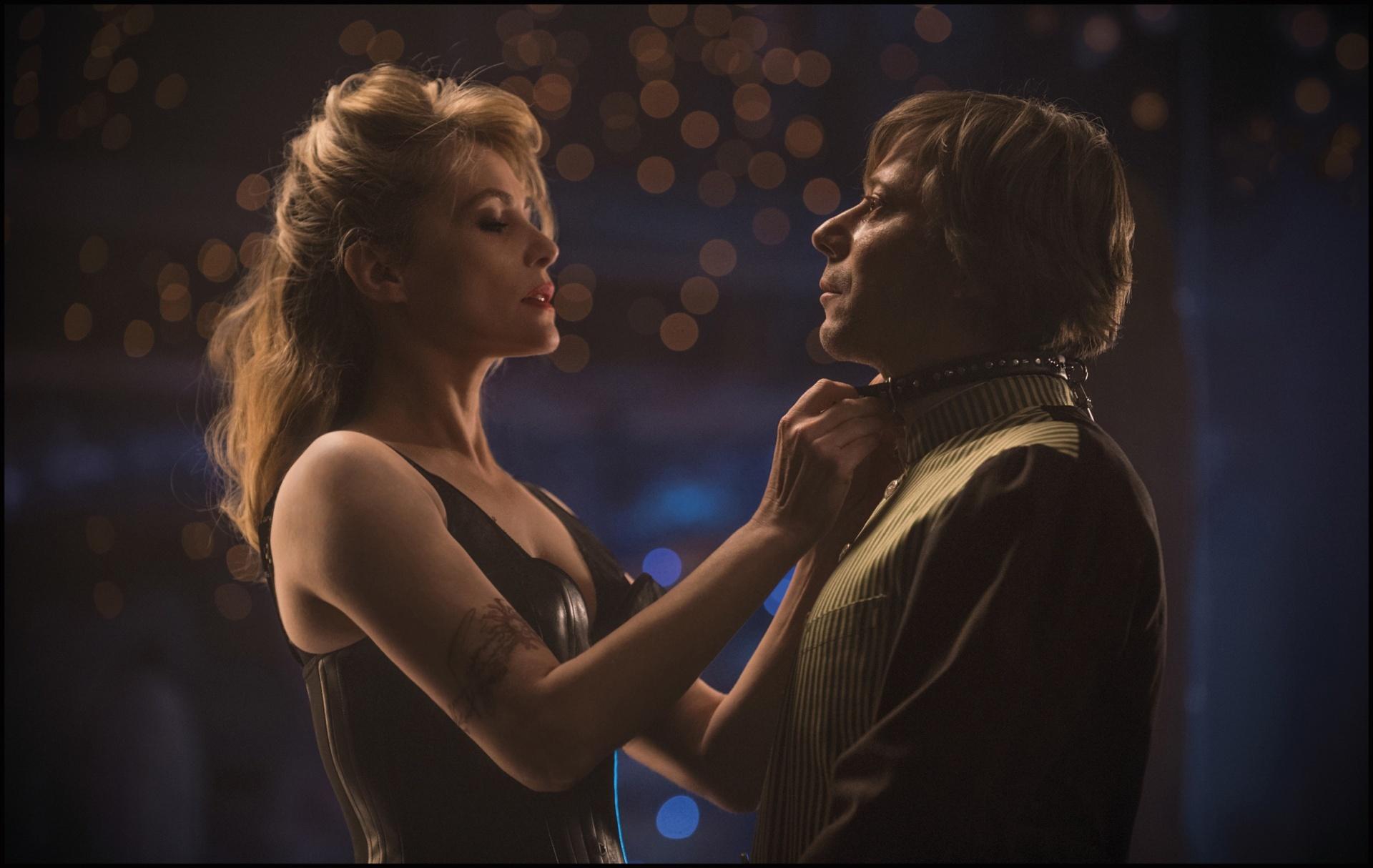
“Venus in Fur” is Polański’s adaptation of the theatrical play written by David Ives. The movie is placed in an empty theatre, where director Thomas Novacheck (Mathieu Amalric) meets Vanda Jourdain (Emmanuelle Seigner) concerning his new play based on the book by Leopold von Sacher-Masoch, the eponymous “Venus in Fur.
What begins as a simple audition for the main role ends as a bizarre psycho-sexual game, where the fine line between the play about obsession and reality becomes thinner and thinner. It’s the most fascinating theatrical play adaptation made by Polański and his best directed movie in 21st century.
All of the characteristic aspects of his direction, such as the claustrophobic confined space, black humor, tense and symbolism are present and almost brought to perfection. The final effect wouldn’t be that bewildering, if not for the great performances by Amalric (looking like Polański’s doppelganger) and Seigner, because they’re carrying the whole movie on their shoulders. There is no false tone in their acting and the characters simply fascinate.
“Venus in Fur,” based only on two actors, fully hypnotizes and absorbs, and Polański’s typical uncanny final doesn’t end uninvolved. This movie is the director’s best possible expression of love for the theatre.
6. The Pianist (2002)
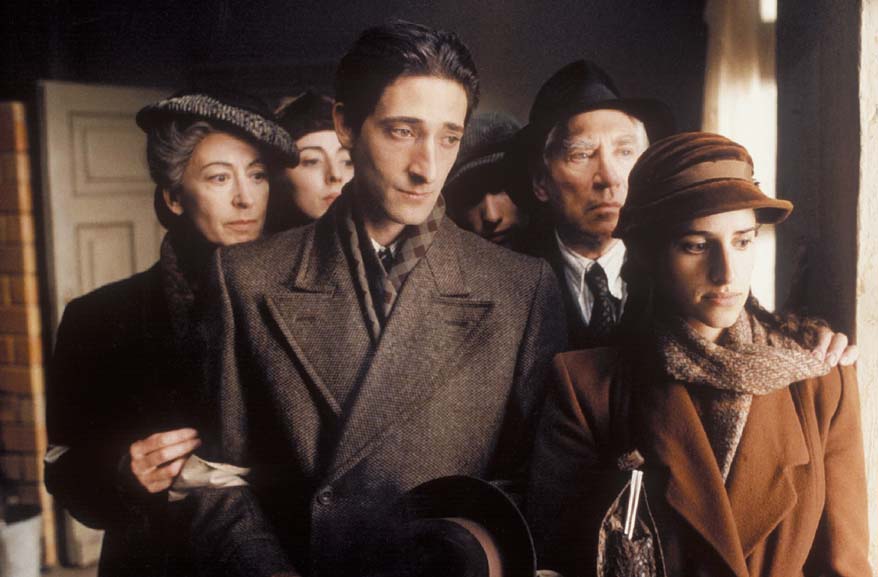
The adaptation of an autobiographical novel of Polish-Jewish pianist Władysław Szpilman is the most intimate movie by Polański. Same as Szpilman, the director experienced the cruelty of World War II himself, being imprisoned in a Nazi ghetto as a child, then fled and stayed hidden from Nazis until the end of the war. Polański’s background story makes “The Pianist” fascinating to watch with its authenticity, but it’s also a sad and devastating experience.
The movie is about survival through the inhumane times and the history of Warsaw during the World War II in a nutshell. The city is not only the background, but also the main “character” right after Szpilman. Along with the main character, we are the witnesses to the bombing of Warsaw, the German military accessing the capital, and Jewish oppression. After escaping from the ghetto, Szpilman lands in a tenement house where he’s isolated from the rest of the world (a bit of the “Apartment Trilogy” spirit), passively watching the Ghetto Uprising and later the Warsaw Uprising.
The direction of each scene is precise, and in a naturalistic way absolutely brings the viewer closer to Polański’s childhood. The soundtrack by Wojciech Kilar and tracks from Chopin adds a proper drama to the whole which, combined with the images, makes for a real heartbreaker.
Adrien Brody in the main role plays sparingly, but in his eyes a burnt-out soul is visible and sorrow coming from the hopelessness atmosphere, which makes his creation tremendously credible. What a shame, then, that an actor of this range got lost in the abyss of “straight-to-DVD.”
Thomas Kretschmann, mostly cast by Hollywood as villains with a German accent, is also praiseworthy. He plays German captain Wilm Hosenfeld who helped Szpilman survive at the end of the movie, and with the acting talent of both, this scene is the most memorable from the film. Brody won a deserved Oscar, as well as the screenwriter, Ronald Harwood and, above all, Polański – first and so far the last.
5. Knife in the Water (1962)
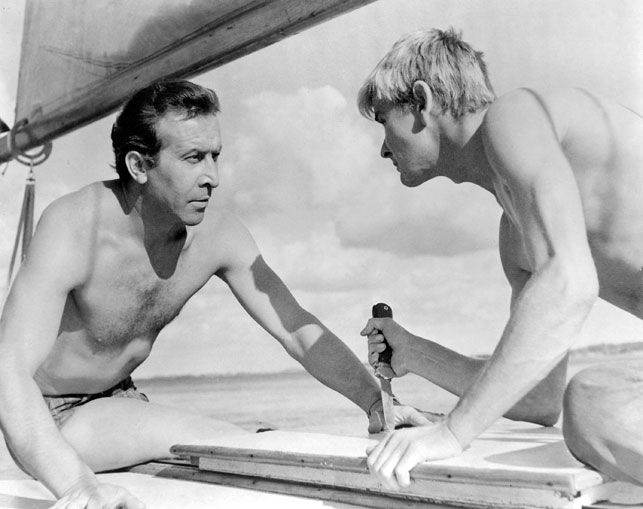
“Knife in the Water” is the feature-length directorial debut of at the time 28-year-old Polański. Directing a movie in such a mature and excellent way on many different levels by a debutant was a rarity in cinema industry. So far, it’s also the only picture directed by Polański in Poland.
The plot is about a one-day cruise in the heart of the Masurian lakes, about a married couple (Leon Niemczyk, Jolanta Umecka) – a middle-aged sports editor and his much younger wife – and a hitchhiker they just recently met (Zygmunt Malanowicz). The title of the movie wrongly suggests that we’ll experience a thriller, but it’s actually an intricately constructed, character-driven psychological drama from the top of the line.
“Knife in the Water” is about the duel between two men, one older, a bachelor of life, and one younger, an optimistic and carefree student. They take part in a specific psychological and generational “pissing contest” – a fight to prove who the real man is, but also for the young wife’s attention.
Despite the fact that on screen there’s nothing seemingly going on, the movie is being watched with shredded nerves and a feeling like it’s only the calm before the storm, especially while it might be ironically suggested by the title. Although 50 years has passed since the premiere, the movie still works, because the problematic aspects of the generational struggle is common and timeless.
The movie is accompanied by atmospheric jazz music by Krzysztof Komeda, who had been Polański’s longtime associate till his death in 1969. They made a wonderfully complementary duo of visionary artists. The movie also designated Polański’s particular fetish, which is characterized his next pictures – setting the action in a close, claustrophobic area.
The critics’ attitude in communist Poland toward “Knife in the Water” was lukewarm, but the movie succeeded abroad and earned the director an Oscar nomination for Best Foreign Language Film, which had never happened with any other Polish filmmaker.
4. Repulsion (1965)
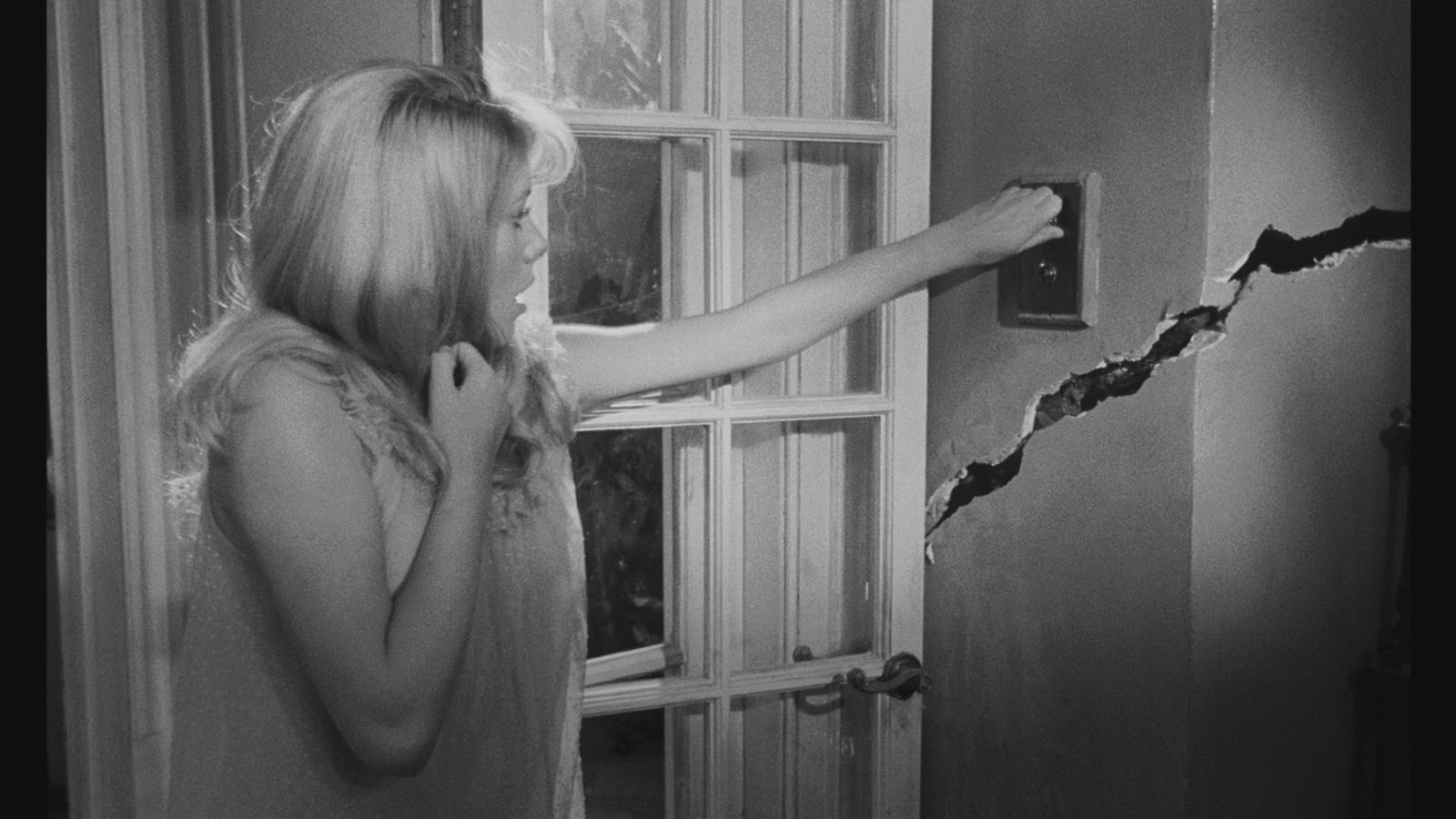
The second Polański movie, “Repulsion,” was shot in England and is the first part of the famous “Apartment Trilogy” – psychological horrors with the keynote of placing the majority of action in a confined space. In “Repulsion,” a young woman named Carol (Catherine Deneuve) is home alone after her sister (Yvonne Furneaux) went abroad with her boyfriend (Ian Hendry). In a moment, Carol stays alone; her fear of her own sexuality will lead her straight to the darkest void and, as a consequence, will make her commit a brutal murder.
Not many movies could show human madness in such an evocatively visual way. The black-and-white cinematography of Gilbert Taylor emphasizes the claustrophobia of the apartment in a perfect technical way, almost feeling the walls shrinking by placing the view from the flouncing actress’ perspective.
The sequences in the corridor with hands hanging out trying to reach Carol, the visions of bursting walls, and the appearance of an ominous figure in the mirror are taken from the worst surrealistic nightmares and connote with German Expressionism. Hallucinations experienced by actress are accompanied and pumped up by the brooding music of Chico Hamilton.
Deneuve is a real revelation in the main role, with her mimicry and body movements fully expressing the mental illness in a very authentic way. The whole movie is an unforgettable and disturbing experience at the same time. With “Repulsion,” Polański began his long-term cooperation with French screenwriter, Gérard Brach.
3. Chinatown (1974)
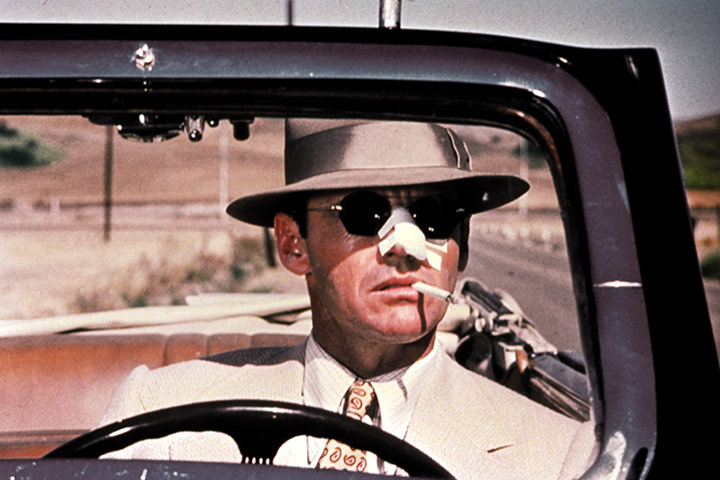
The second after “Rosemary’s Baby,” but also the last American movie from Polański, “Chinatown” is a real neo-noir genre classic. It was supposed to be the next easy money case for private detective Jake Gittes (Jack Nicholson), who was hired to follow Hollis Mulwray, the chief engineer of the Los Angeles Department of Water and Power, suspected by his wife for infidelity. Unwittingly, he got mixed up in a complicated intrigue connected with corruption on the highest level – water, murder and also… incest.
“Chinatown” is the greatest tribute to a truly American movie genre that is “noir.” It has the best features of it, such as having a main character be a wisecracking, hard-boiled private investigator; multi-dimensional and slowly thriving intrigue; the contestation of the “American dream” myth; and a femme fatale of course, here depicted as Evelyn Mulwray (Faye Dunaway).
Above all, there is a fatalistic spirit of Polański, who won’t give the viewers a good classic ending where the protagonist would defeat the “bad” and save the lady from oppression at the end of the day. The end of the film is one of the bleakest movie finals that Polański has served.
The script, full of surprises and suspense, was written by Robert Towny, who deservedly won an Oscar. Nicholson, as the disillusioned Jake Gittes, is perfect in his role and purposely appears in every scene of the movie to have a constant view from his perspective. He’s as iconic for noir as Humphrey Bogart in “The Maltese Falcon,” where a director, legendary John Huston, shows up as a villain – the elderly and very dangerous financial magnate, Noah Cross. Similarly in “Chinatown,” the director shows up as a gangster who hits Nicholson in the nose.
“Chinatown” awaited a sequel “The Two Jakes” (1990) directed by Jack Nicholson himself, playing again Jake Gittes. Unfortunately, the movie looks pale in comparison to its predecessor. Forget it Jack, it’s “Chinatown” that really matters.
2. Rosemary’s Baby (1968)
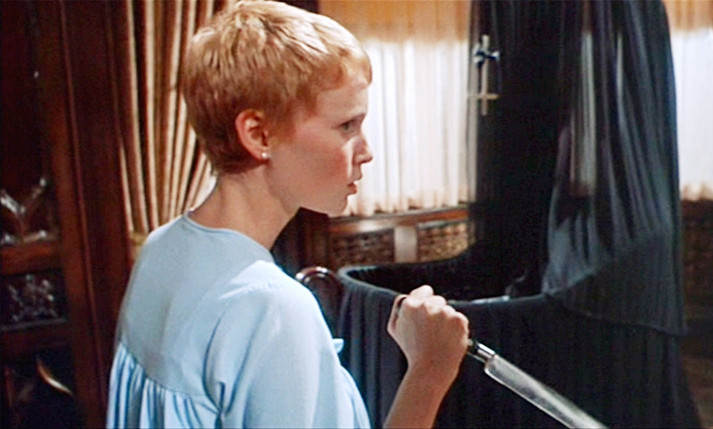
“Rosemary’s Baby” is an faithful adaptation of Ira Levin’s novel by the same title and the first movie directed by Polański in Hollywood, and is also probably his most popular and recognizable picture. The main character of the second part of the “Apartment Trilogy” is Rosemary (Mia Farrow), who moves in with her husband in a apartment in New York.
The idyll is interrupted by the mysterious suicide of a young neighbor; moreover, Rosemary gets pregnant after having a bizarre nightmare where she had sex with the Devil himself. Later on, she starts to suspect the other residents of the building are Satan worshippers and that they intend to take the unborn child away from her and that her husband is in some way involved in it too, because he succeeds as an actor in suspicious circumstances.
The movie is considered a crucial horror classic for good reason, and also a spark that began the fashion for Satanic horrors in US, such as “The Exorcist” (1973) and “Omen” (1976). In contrast to its imitators, “Rosemary’s Baby” doesn’t focus on the confrontation with the dark side and has a fully symbolic mimicry as an allegory of the fear of motherhood.
Up to the end, the movie doesn’t tell whether the horror elements are simply the effects of Rosemary’s deteriorating mental state caused by the pregnancy. It generates suspense according to the rule that we fear the most, that what isn’t seen leaves a lot to the imagination instead of literalism, which is precisely a foundation of the best-written American horror movies. Mia Farrow builds Rosemary in an expressive way, but never crosses the border of becoming an over-the-top caricature.
Especially notable should be Ruth Gordon, who plays the old and nosy Satanic neighbor Minnie. She’s a peculiar movie villain, but also the main source of ironic humor. The actress was honored with the Oscar for a Best Actress in a Supporting Role. “Rosemary’s Baby” has the most memorable keynote in the history of horror movies – the sinister “Lullaby,” created by Krzysztof Komeda.
The movie has not only the unsuccessful and luckily forgotten sequel “Look What’s Happened to Rosemary’s Baby” (1976), but also the equally unsuccessful mini-series remake from 2014 with Zoe Saldana as main character. The masterpiece of suspense “Rosemary’s Baby” seems to be simply impossible to recreate.
1. The Tenant (1976)
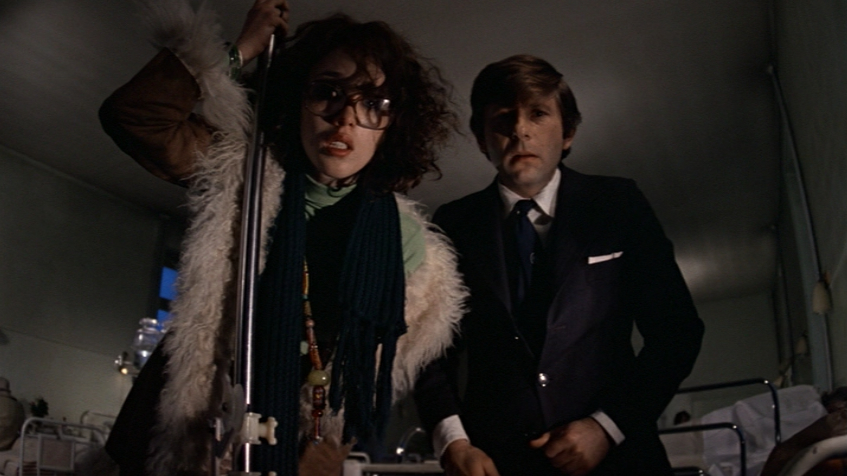
The last film from the “Apartment Trilogy,” “The Tenant” is an adaptation of Roland Topor’s novel “Le Locataire chimérique” and depicts a bizarre story of a Polish immigrant in France, Trelkovsky (Roman Polański himself), who moved in to an old tenement house in Paris. The flat has its dark past, because the previous tenant jumped out of the window. The residents of the tenement house aren’t very friendly and soon start to harass Trelkovsky. It’s the reason why he began to fall into madness in his own four walls and got a paranoid realization that his neighbors planned to force him to commit suicide.
The plot of the book seems to made for Polański’s directing talent. Its potential is fully worked out like nowhere else. The movie is a pure example of Polański’s style and the best part of the “Apartment Trilogy,” accomplishing the claustrophobic paranoia and cancerous madness started in “Repulsion” and “Rosemary’s Baby.” The movie intertwined horror with sardonic humor and macabre, grotesque and razor-sharp social observation, and unleashed the author’s vision. This Kafkaesque story about social alienation is also the most terrifying movie by Polański.
The surrealistic scene with kicking the human’s head like a soccer ball guarantees many sleepless nights, especially if you’ve experienced living in a tenement house and have had a conflict with your neighbors. It’s also proof for Polański’s artsy imagination. It’s hard to point out every memorable and beautifully staged sequence of “The Tenant,” so it’s better to find out yourself if you have the courage.
Polański’s idea of casting himself in a main role (in many scenes playing in a dress and wig) hits the bullseye, because he’s very convincing as Trelkovsky going mad. It’s a pity that this director never played as a main role again, because he surely has acting talent. “The Tenant” is a great choice to begin the adventure with Polański’s filmography; it’s his body of work at glance and an example of this distinguished director at his best.
Author Bio: Antoni Urbanowicz is a Film studies graduate, defending a thesis about exploitation movies. He is a dedicated cinephile, avid reader and 80’s pop culture enthusiast. His taste of cinema ranges from Z-class trash to world-class masterpieces.